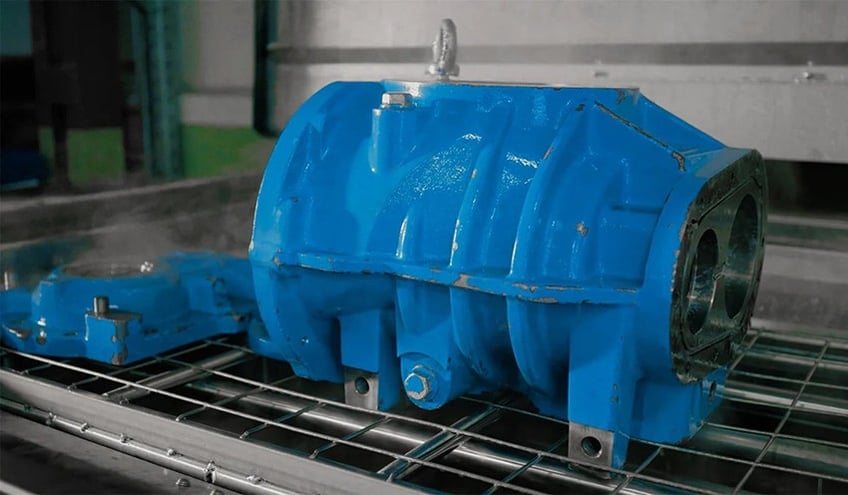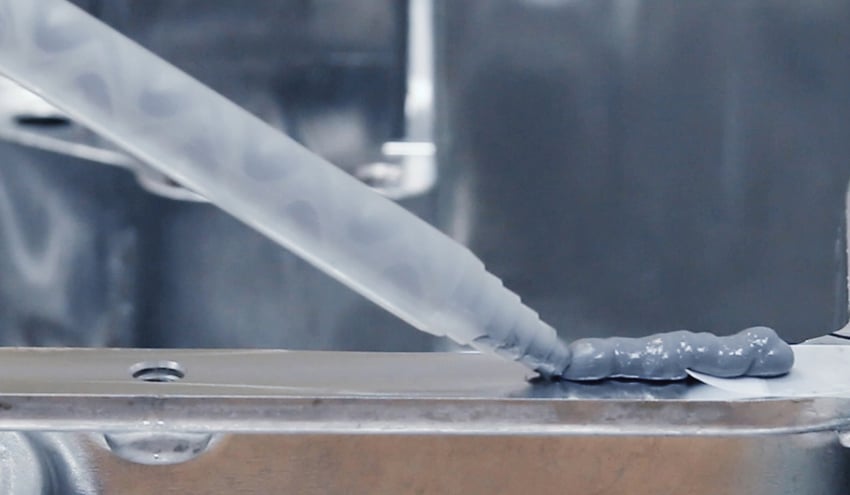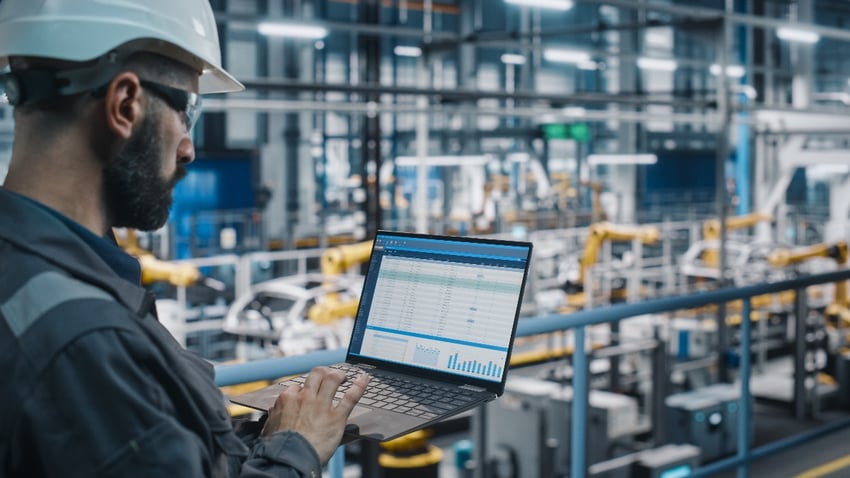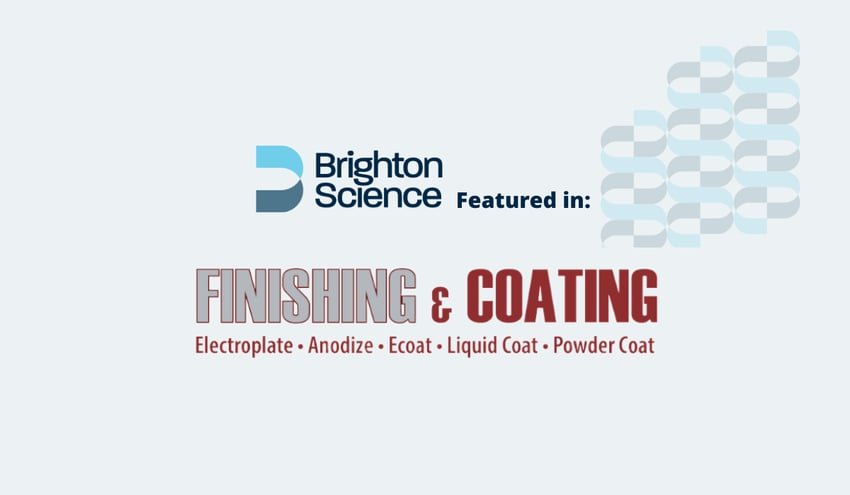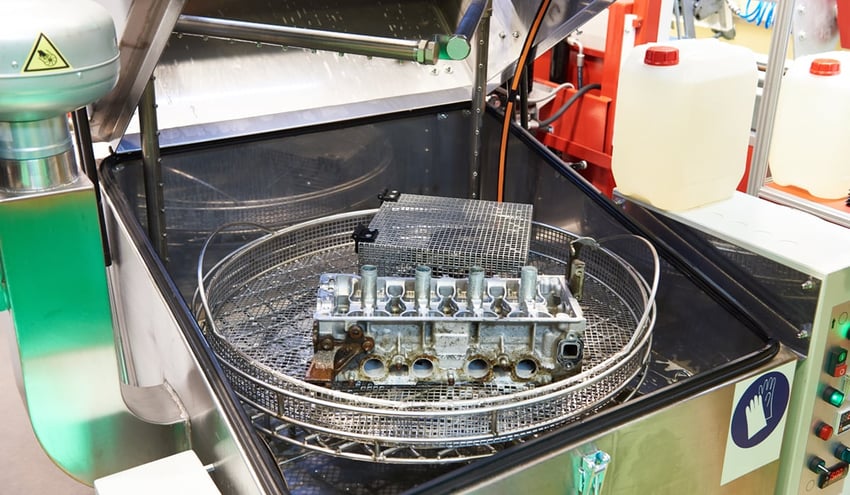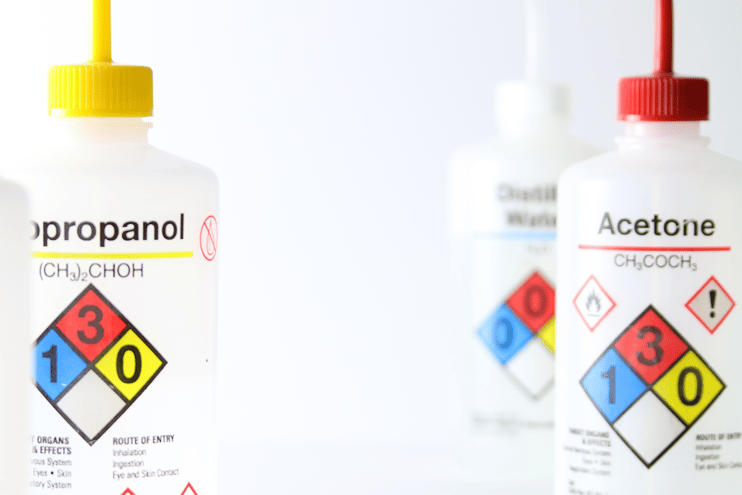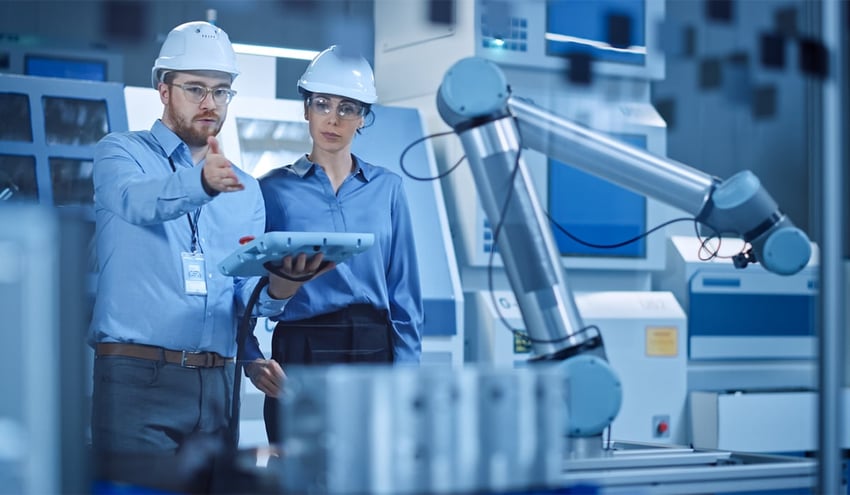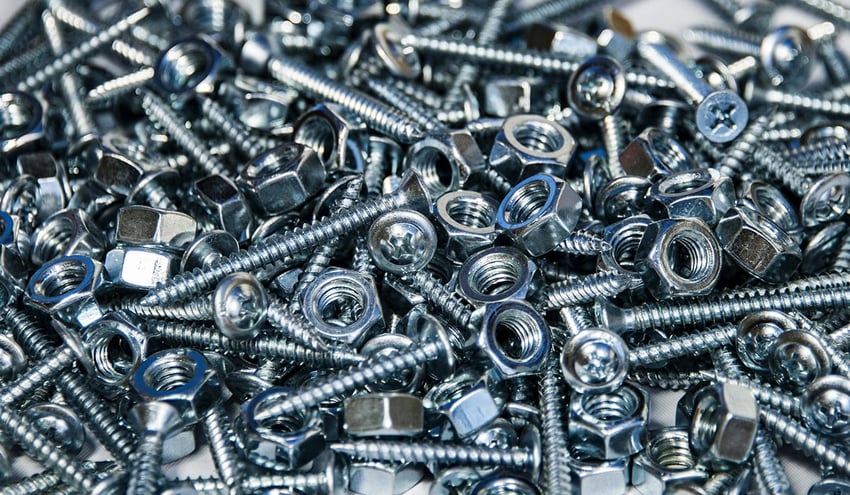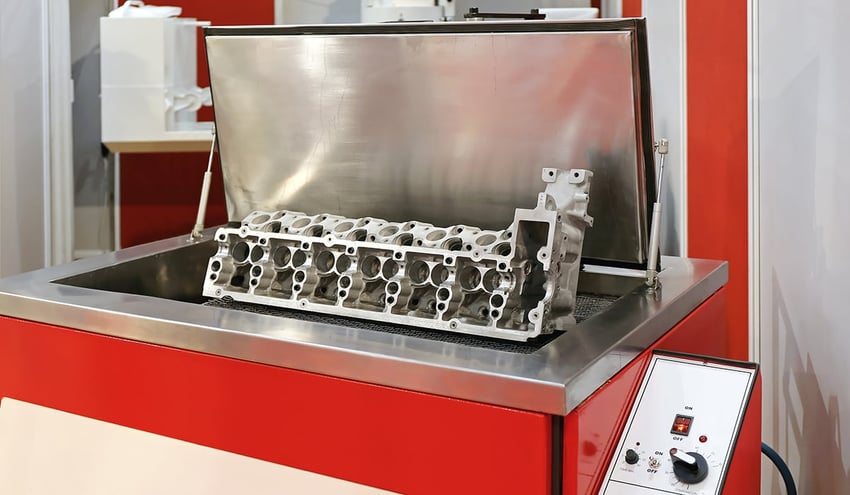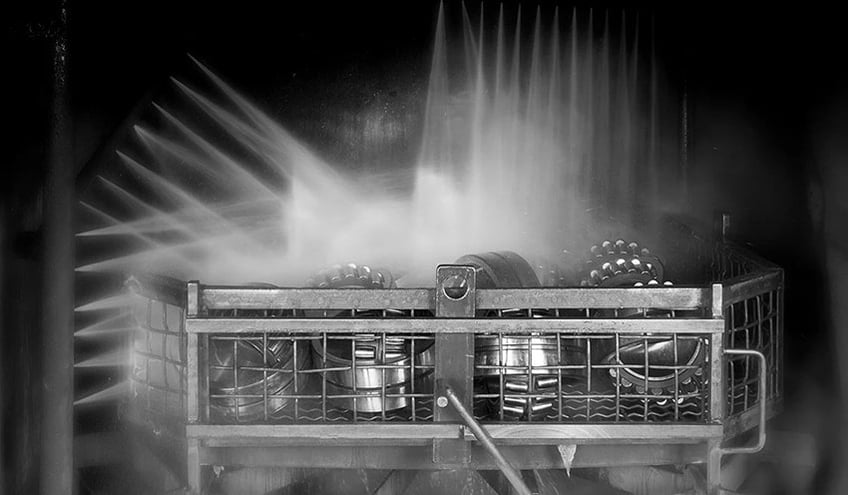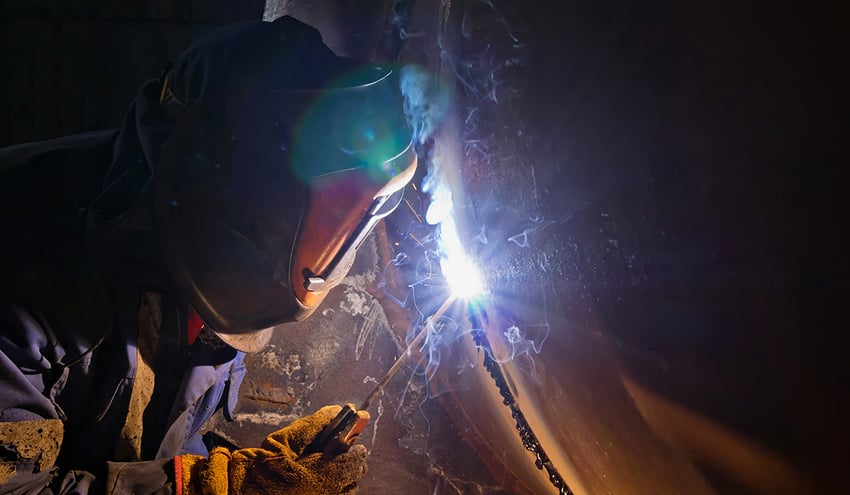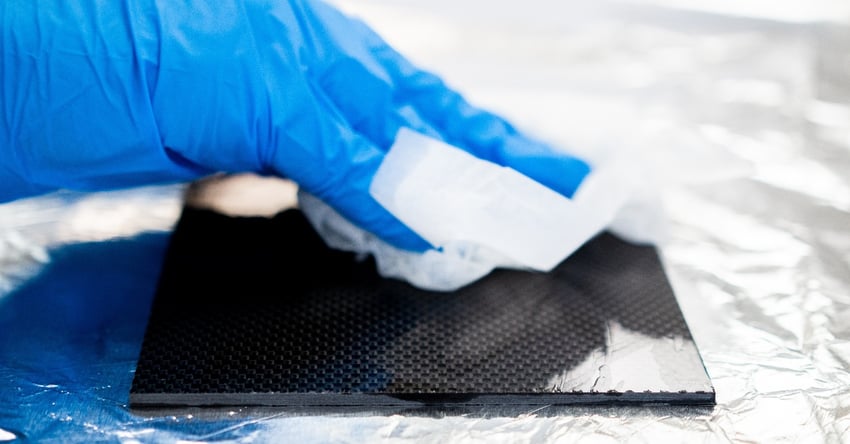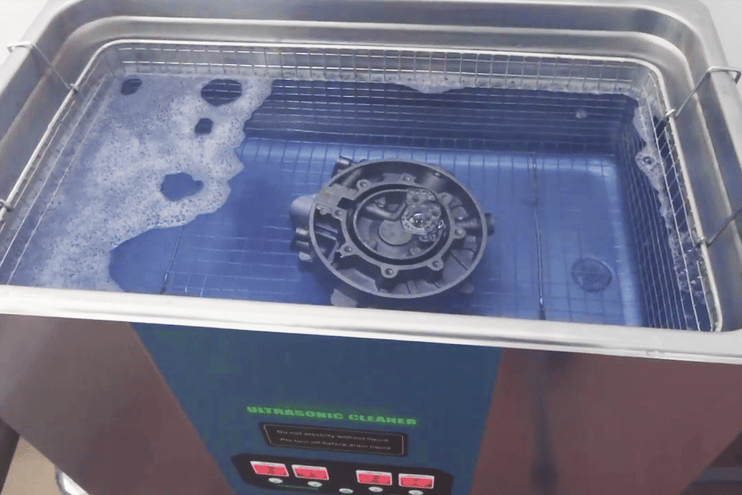Changing the Definition of Clean
The machines tasked with cleaning metal parts have moved from what amounts to large-scale dishwashers to highly advanced ultrasonic aqueous baths and vapor degreasing systems.
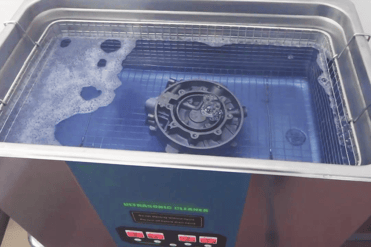 Ultrasonic parts washers are immersive tanks that pulse the water using high-frequency sound waves that vibrate the component being cleaned. This vibration releases contaminants from the part and is particularly helpful in situations where parts or components have complex geometries where dirt, grime, or contamination can easily hide.
Ultrasonic parts washers are immersive tanks that pulse the water using high-frequency sound waves that vibrate the component being cleaned. This vibration releases contaminants from the part and is particularly helpful in situations where parts or components have complex geometries where dirt, grime, or contamination can easily hide.
Vapor degreasing systems are also immersive, but they use an evaporated solvent to dissolve oils, greases, and fluxes from mechanical and electronic parts. These high-precision cleaners can uniformly wash objects but still require verification and ongoing monitoring to keep them on track.
But “clean” isn’t really clean if the surface isn’t verified as “chemically clean.”
Revolutionize Your Manufacturing with Surface Quality Inspection Technology.
The difference lies in the level to which contaminants that are too miniscule to be seen with human eyes are removed. If a part isn’t chemically clean (and verified as such), it will be a risk to the manufacturer when it comes time to be painted, coated, sealed, or bonded.
To ensure that a surface has been truly cleaned, the state of the material surface needs to be quantitatively understood and specified at each Critical Control Point. Using a water contact angle measurement instrument, product development teams have the visibility they need to develop a cleaning specification to then verify, monitor, and choose the appropriate cleaning process for the application.
But My Current Cleaning Methods Work, Right?
Common cleanliness test methods, like Dyne ink and water break tests, have an extremely limited scope and leave the test results up to human error. These tests aren’t quantitative or consistent, and they can be destructive to the part being tested.
We have created an infographic that visualizes how each method compares to a water contact angle measurement.
A Cleaning Method is Only as Good as its Verification Process
When you can verify how clean a surface is, you can ensure the effectiveness and long life of parts washers. And a cleaning method is only as useful as its verification process. Using contact angle tools and partnering with surface intelligence experts to determine surface cleanliness, development teams can build new products that include a cleanliness specification. This specification becomes the common language surrounding surface quality that begins at your supplier’s location and extends throughout the product’s entire lifecycle.
Furthermore, partnering with surface intelligence experts gives you a competitive advantage by helping you choose the most efficient cleaning methods and parts washers and providing data to optimize existing cleaning methods and equipment. Sometimes, a particular solvent is more effective than another, or the fluid in a parts washer becomes dirty. Rapid contact angle measurements will detect these variables to ensure the process runs seamlessly.
A cleaning process study conducted by Brighton Science shows how easy it is to develop proper surface cleaning processes for optimal adhesion. Figures 1 and 2 compare different washing methods on metals and composites. Figure 1, displaying measurements on metals, shows the contact angles—which lower as surface cleanliness increases—after various washing techniques.
This study shows that the most highly effective cleaning method for these metals is a parts washer followed by an aerospace-grade solvent wipe. Figure 2 suggests the parts washer alone is highly ineffective on these composites, but when followed by a solvent wipe, it produces the cleanest surface.
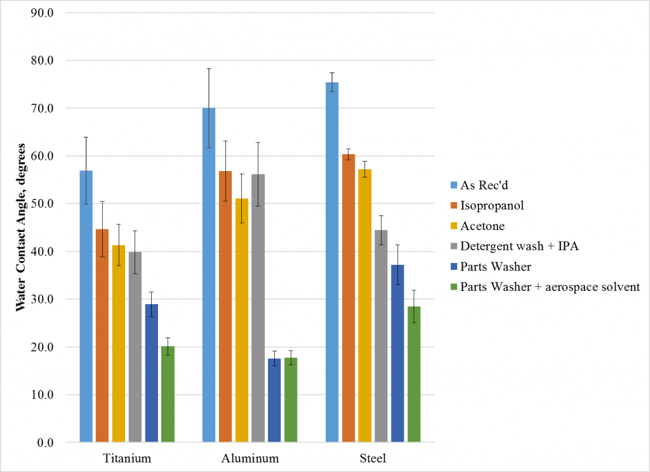
Figure 1: Washing methods on metal
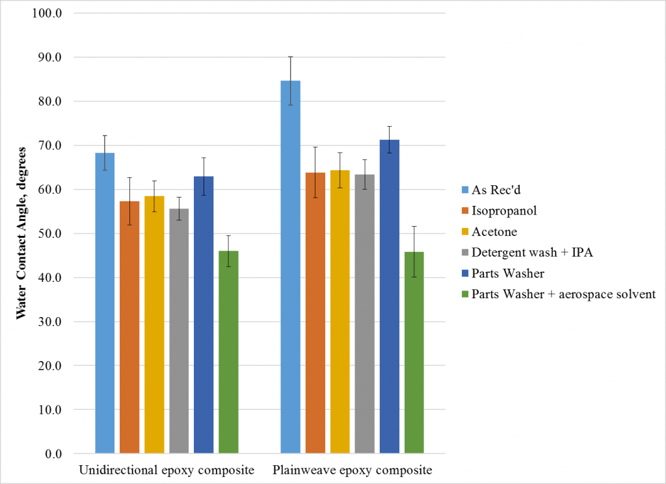
Figure 2: Washing methods on composite
These two figures, generated in a timely fashion, show how easily washing methods may be compared to improve and optimize the surface cleaning process.
Brighton Science specializes in helping product development and R&D teams develop surface cleanliness specifications for each Critical Control Point within their surface cleaning process.
The Advanced Cleaning Intelligence Program
Brighton Science has partnered with Hubbard-Hall to bring the market a state-of-the-art cleaning service: The Infinity Surface Cleaning Intelligence Program. This program combines Brighton Science’s technology and materials science expertise with Hubbard-Hall’s chemistry and cleaning knowledge.
This collective service offering aims to solve, prevent, and control the variables and risks manufacturers face when preparing surfaces for bonding and adhesion. Through this program, customers can ensure that critical cleaning processes are predictable and data-driven and enable innovation to match customers’ ever-changing surface cleanliness needs.
Reduce costs, ensure compliance, and achieve superior cleaning results! Get our free industrial cleaning guide, "Metrics That Matter: Quantifying Cleaning Efficacy for Manufacturing Performance," packed with knowledge for development teams and engineers.

